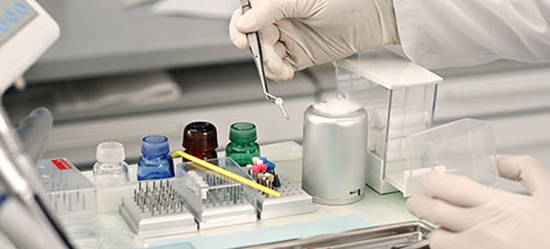Positive effect of zinc on angiogenesis and bone defects treatment
University researchers used "zinc oxide" to treat bone defects, which have a significant effect on osteogenesis and angiogenesis. The results are published in the International Journal of Biomedical Materials Research, "The effect of modified electrospun PCL?nHA?nZnO scaffolds on osteogenesis and angiogenesis".

Dr. Sameereh Hashemi-Najafabadi, Dr. Mohamadreza Baghaban Eslaminejad, Amin Rahmani and their colleagues at the Chemical Engineering Faculty of Tarbiat Modares University and Royan Institute concluded this study.
Large bone defects treatment is one of the challenges in current bone tissue engineering approaches. Various strategies have been proposed to address this issue, among which, pre?vascularization by co?culturing of angiogenic and osteogenic cells on the scaffolds can alleviate this problem. In the present study, modified fibrous scaffolds were prepared by electrospinning and subsequent ultrasonication of polycaprolactone (PCL) containing nano?hydroxyapatite (n?HA), with/without nano?zinc oxide (n?ZnO), and polyethylene oxide (PEO) as a sacrificial agent. The physical, mechanical and chemical characteristics of the scaffolds were evaluated. The results showed the presence of n?ZnO, which in turn increased Young's module of the scaffolds from 5.5± ۰.۶۷ to 6.7± ۱.۷۷ Mpa. Moreover, MTT, SEM, alkaline phosphatase (ALP) activity, chicken embryo chorioallantoic membrane (CAM) assay and real?time RT?PCR were utilized to investigate the biocompatibility, cell adhesion and infiltration, osteoconductivity, angiogenic properties and expression of osteogenic and angiogenic related genes. ALP assay showed that the highest enzyme activity was noted when the modified scaffolds containing n?ZnO were seeded with HUVEC:hBMSC at the cell ratio of ۱:۵. CAM assay showed induction of angiogenesis for the scaffolds containing n?ZnO. Real?time RT?PCR results showed significant up?regulation of angiogenic related genes. Thus, the scaffolds containing n?ZnO may have great potential for osteogenesis and angiogenesis in tissue engineering applications. This article is protected by copyright. All rights reserved.
*Royan Institute is a public non-profitable organization which is affiliated to Academic Center for Education, Culture and Research (ACECR) and was established in ۱۹۹۱ by the late Dr. Saeid Kazemi Ashtiani as a research institute for Reproductive Biomedicine and infertility treatments. In ۱۹۹۸ this institute was approved by Ministry of Health as Cell Based Research Center. Now this institute acts as leader of Stem Cell research and also one of the best clinics for infertility treatment. It has ۸۱ scientific members and ۲۳۲ researchers and lab technicians. Royan consists of three research institutes, each focused on different fields of research.
*The Journal of Biomedical Materials Research is a peer-reviewed scientific journal of biomedical material science. It was established in ۱۹۶۷. In ۱۹۷۴، it absorbed Biomedical Materials Symposium (1971– ۱۹۷۴). In ۱۹۹۰، it absorbed the journal “ Journal of Applied Biomaterials” (1990– ۱۹۹۵). In ۲۰۰۲، it split into two parts, Journal of Biomedical Materials Research Part A، and Journal of Biomedical Materials Research Part B. The two parts are published by John Wiley & Sons.
